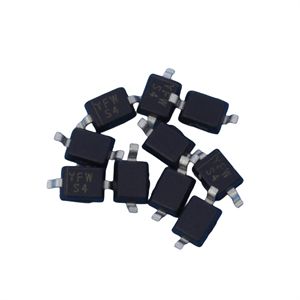Date:2024-10-30 Categories:Product knowledge Hits:314 From:Guangdong Youfeng Microelectronics Co., Ltd
The most basic form of processing analog signals is amplification. In production practice and scientific experiments, analog signals obtained from sensors are usually very weak and can only be further processed after amplification or given sufficient energy to drive actuators and complete specific tasks. The core component of the amplification circuit is the transistor, and the current amplification effect of the transistor is related to the special structure of the PN inside the transistor.
(1) In order to facilitate the emission of electrons from the emitter junction, the doping solubility of the emitter semiconductor is much higher than that of the base semiconductor, and the area of the emitter junction is relatively small.
(2) Although the emitter and collector regions are doped semiconductors with the same properties, the doping solubility of the emitter region is higher than that of the collector region, and the area of the collector junction is larger than that of the emitter junction, making it easier to collect electrons.
(3) The base region of the PN junction connecting the emitter and collector is very thin, and the doping solubility is also very low.
The above structural characteristics are the internal factors that enable the transistor to amplify current. To enable a transistor to amplify current, in addition to the internal factors of the transistor, there must also be external conditions. The emitter of a transistor is forward biased, and the collector junction is reverse biased, which is an external condition for the transistor to have a current amplification effect.

Previous: Classification, Structure, and Principle of MOSFET
Next: Using voltage inspection method to quickly locate fault points in integrated circuits